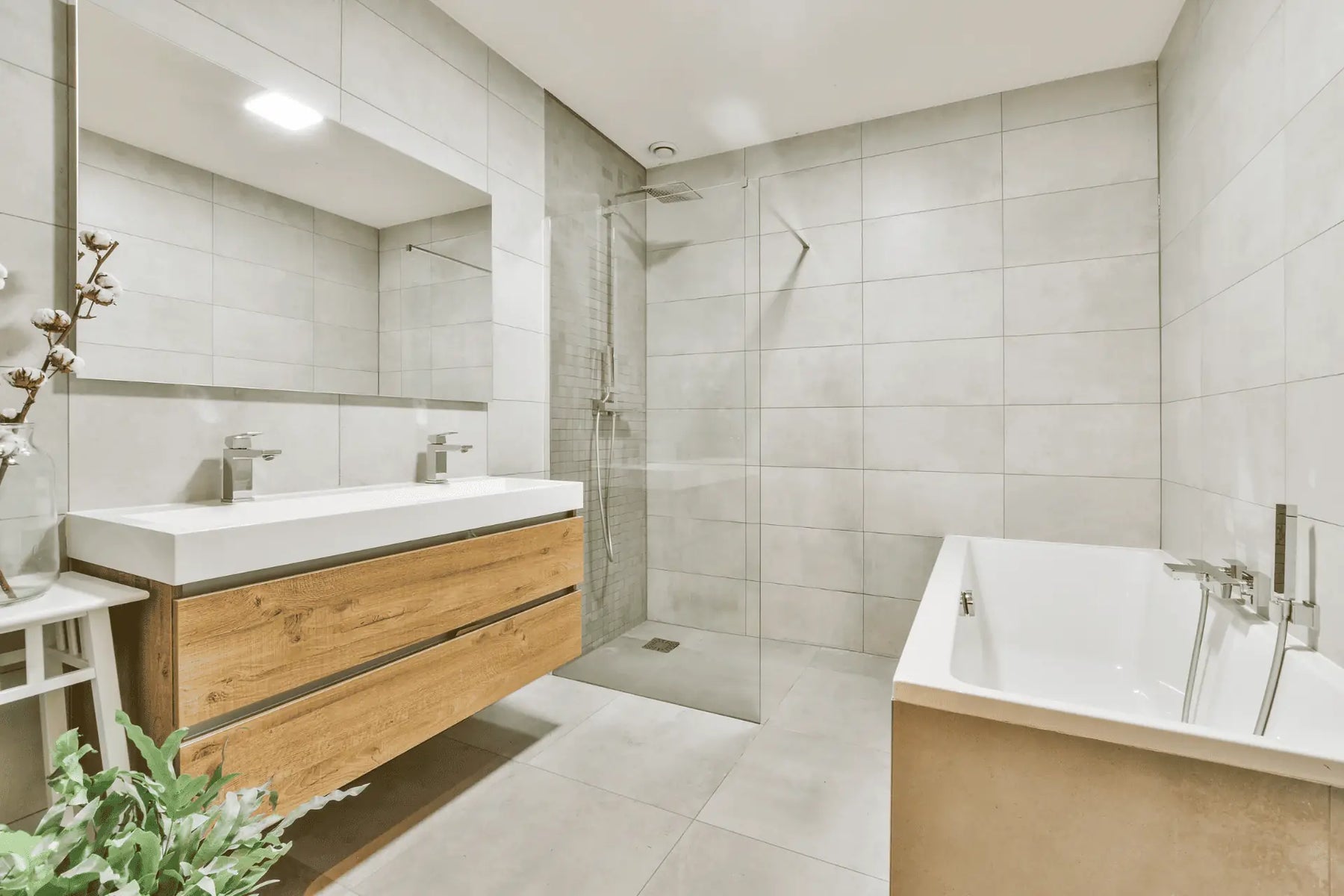
Plumbing for a Basement Bathroom: 6 Things to Know
Building a basement bathroom or renovating your current one is a great way to increase the value and comfort of your home. However, this task comes with its unique set of challenges and considerations, especially when it comes to plumbing.
Unlike upper-floor bathrooms, basement bathrooms require careful planning around existing structures, water flow, and even the basic laws of gravity. From understanding the complexity of below-ground drainage to choosing the right basement bathroom plumbing fixtures that align with your space and plumbing system, every decision plays a role in the success of your project.
If you think your basement could benefit from a bathroom upgrade but don’t know where to begin, here’s what you need to know.
-
Consider the Necessary Building Codes and Permits
Taking on any home improvement project requires adhering to building codes and securing local permits.
These regulations can affect various aspects of your basement bathroom project, including the placement of fixtures, electrical wiring, and plumbing installations. Failing to abide by the appropriate building codes or not having a permit before starting your basement renovation project can cost you. Addressing these considerations with careful planning and professional advice can help ensure your basement bathroom plumbing is successful, functional, and compliant with local codes.
-
Work With the Existing Water Lines
Evaluate the existing water supply lines in your basement to determine if they can support a bathroom. This involves checking both the cold and hot water supply for adequate pressure and volume. In some cases, you may need to upgrade your water supply lines or water heater to meet the new demand.
-
Optimize the Bathroom Layout
During the planning stage of basement plumbing for a bathroom, you have to estimate the size of the new basement bathroom while considering the plumbing parts. The layout of your basement bathroom requires thoughtful planning to maximize space, functionality, and comfort.
Basement bathrooms often have limited space. It’s important to lay out your fixtures in a way that optimizes the available area without making the space feel cramped. Consider using space-saving options like corner showers or pedestal sinks if necessary.
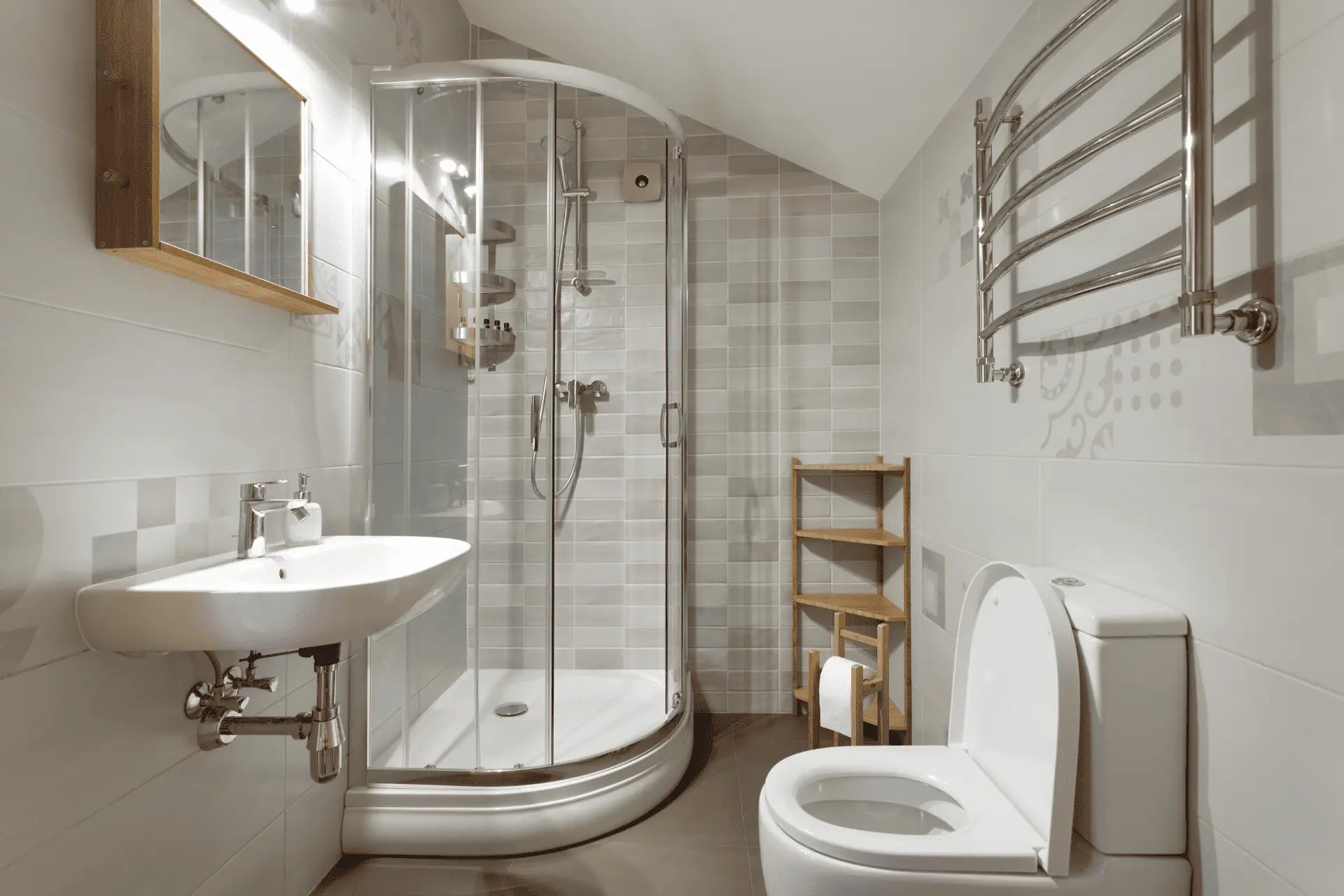
Image source: Canva
The existing drain lines may dictate or limit where you can place certain fixtures without extensive remodeling. For example, connecting a new basement toilet or shower to existing drainage systems might require strategic placement to minimize the need for new piping.
With your walls clearly defined, you should be able to accurately mark the position of your toilet drain or shower drain. For instance, you can use a general measurement of the bathtub or shower stall to determine where your basement drains should be placed.
That said, this should be discussed with your plumber, who can advise you on how to avoid problems with the main drain line or sewer line.
-
Take Your Basement Drain Lines Into Account
Basement bathroom plumbing requires careful planning for drainage and waste venting. Due to their below-ground location, gravity may not be sufficient to move waste into the main sewer line. Solutions like a sewage ejector or macerating toilet can be essential for pumping waste up to the main sewer or septic line. Additionally, proper venting is crucial to prevent sewer gases from entering the home and to ensure smooth drainage.
-
Select High-Quality Plumbing Supplies and Fixtures
Choosing the right plumbing supplies and fixtures can make or break the aesthetics, functionality, and durability of your basement bathroom. Some things to consider include:
- Compatibility and size: The fixtures you choose should be compatible with your basement’s plumbing system
- Water efficiency: Opt for fixtures that are designed to conserve water, such as low-flow toilets and showerheads
- Quality and durability: Choose high-quality materials that are known for their durability and resistance to corrosion and wear
- Ease of maintenance: Select ones that are easy to clean and maintain with parts that are easily sourced from your local plumbing parts supplier
-
Don’t Forget to Add Extra Ventilation
Most basements are already dark and damp. Adding a bathroom, especially a 3/4 bath or shower stall, will add more moisture to the area which can cause mold or mildew to grow.
Installing a quality ventilation system is essential to remove moist air and maintain air quality. If you have the option, you can install a 3-square-foot long window that opens at least 50% of the way or a ceiling vent ducted outside that can move 50 cubic feet of air per minute.
Consider adding a heating solution, such as radiant floor heating or a dedicated heater, to keep the space warm and comfortable.

Image source: Canva
Start Your Basement Bathroom Plumbing Project Today!
Home improvement projects require a lot of effort to ensure you’re not compromising your property—and installing a bathroom in your basement is no different. But if you’re prepared to take the plunge, use only the best parts and supplies for your basement bathroom plumbing project.
Secure your project’s success with durable materials from NYDirect, your reliable home improvement supplies provider. Find everything you need in our online catalog. With our seamless and stress-free buying process, you can have your items delivered to your doorstep the next day.
Kick off your basement bathroom renovation by becoming a Pro Member. Gain access to exclusive discounts and save big with wholesale pricing!
Shop Popular Brands
America's Leading
Plumbing Supplies Retailer
Save big on plumbing essentials with
our wholesale prices!



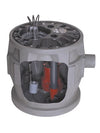

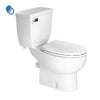

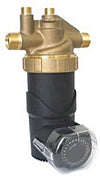

Leave a comment